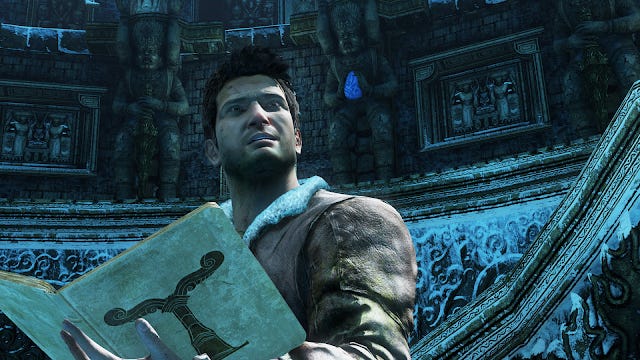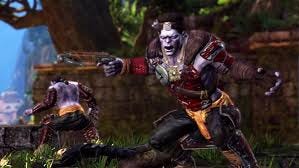The Good, The Bad, And The Improved | Uncharted 2: Among Thieves (Review)
With such a great first entry into a brand new series, NaughtyDog had a lot to live up to with Nathan Drake's second outing. They had to keep the core formula that made Uncharted tick while making sure the game feels new and refreshing, rather than a stale copy-paste of the first one.
Uncharted 2: Among Thieves is an amazing second landing for Nathan Drake and the series. With even more action and even more story than the first one, Among Thieves makes its own in an already exceptional franchise.
But as I sat down to review Uncharted 2, I realised just how iterative the game is on its predecessor, something expected from a sequel. So rather than a comprehensive review, here are the good, the bad, and the improved with Uncharted 2: Among Thieves
*spoiler warning*

Source: PlayStation
The Good And The Improved
Uncharted is a series defined by its action set-pieces and over the top thrill rides. Uncharted 1: Drake's Fortune started this trend and Uncharted 2: Among Thieves certainly continues it. Long combat sequences are intensified by a wild helicopter fight along a cities rooftops or the arrival of a fifty-ton armoured tank, while banter ensues between Nathan Drake and his compatriot.
In Uncharted 1 I felt as if these set pieces were too basic and similar, like shooting a gun while Elena drives a jeep away from an unrelenting wave of enemies or shooting a gun while Elena drives a boat past clusters of enemies. Uncharted 2 solves these caveats by making sure Nathan Drake is non-static during these sequences.
Take the train sequence from the middle of Uncharted 2. Not only is Nathan Drake constantly moving forward, but he is also jumping, climbing, and taking cover as the game throws one obstacle at you after another. At first, it may be a brute with a massive machine gun or swinging train signals that you have to avoid or even another helicopter. Seriously, this game loves helicopters. And I'm not gonna argue with their choice because Uncharted 2 provides one great adrenaline-pumping experience after another at an almost flawless pace.
Linearity is something that exists in all Uncharted games. In Uncharted 1 this linearity was flat. Most combat sequences took place in a room or plateau-like area, while actual verticality was reserved for the climbing sections. Uncharted 2 solves this problem by making combat sections of the game much more vertical.
The experience of climbing up a winding hotel staircase while taking on enemies descending from above is unmatched by anything in the first game. In addition, towards the end of the game, there is an entire tower fight, where the player starts from the top and must make their way down while clearing out the building.
This drastically opens up the player's approach to a particular encounter. You can creep your way around and stealthily take out your enemies, and even if you do get spotted, there is loads of room for improvisation. Verticality is something I didn't know I needed until Uncharted 2 gave it to me on a golden platter.

Source: PlayStation
What adds to the cinematic qualities of Uncharted 2's set pieces are the brilliant settings that the game takes place in. From the courtyards of a Turkish museum to the lush jungles of Borneo and a Nepalese city nestled amongst snow-capped Himalayan mountains, every locale of Uncharted 2 strikes a unique chord in NaughtyDog's guitar of environmental design.
While Uncharted 1 was relegated to a monotonous crowd of samey looking tropical forests, Uncharted 2's roster of various locales makes the journey all the more interesting and gives the player a true globetrotting experience.
Uncharted 1 had a pacing issue, both with its guns and its puzzles. Shooting is a core aspect of an Uncharted game. While nowhere near the number and variety of guns found in a looter shooter or any shooting game for that matter, Uncharted still has a small assortment of guns with different uses, whether its a shotgun for close range, an RPG for armoured brutes, or a sniper for far away enemies.
The first game had all these types of guns, but its pacing was off. For around the first three-fourths of the game, the player was given a very small sample of the gun arsenal to use. While it did open up later on, there wasn't enough of the game left to use these guns in. Uncharted 2: Among Thieves perfectly paces its delivery of weapons, while also adding a few more to the arsenal, making the combat in Nathan Drake's second outing more than just a continuation of the first.
The puzzles fall into a similar hole. The first game was rather short on these mind-stimulating activities and overloaded the second half of the game with all of them. Among Thieves rectifies this by improving their pacing, quality, and even lighting.
Uncharted 2's puzzles are well sprinkled throughout the game, perfectly placed to slow down the high-intensity gameplay with some calm and thoughtful moments.
In addition, all of Uncharted 1's puzzles relied on having to move apart or change the orientation of one or more objects/ engravings. In this game, however, the puzzles have some actual variations to them. While these simple styled ones do exist, more complicated and environmental ones were also added, a standout being one where light must be accurately reflected off mirrors and onto the right spot.
A more minor but appreciated improvement to the puzzles was their lighting. In the first game, it was frustratingly hard to see each and every piece of the puzzle properly due to it being too dark. Uncharted 2 fixes that by simply proving more natural light to the room, like having open windows or flame-lit torches.

Source: PlayStation
On the non-gameplay side of the spectrum, Uncharted 2 improves upon the first by providing a captivating and emotional story with actually interesting character relationships and interactions. El Dorado was a horrible centrepiece to Uncharted 1's story. The treasure was anything but iconic and recognizable, a mish-mash of incoherent details and nothing to grab the players attention or interest.
The lost city of Shambhala and the Cintimani stone on the other hand was a nice change to the story. The player now had a genuinely intriguing endpoint to chase after, making each of Nathan Drake's risky and stupid decisions more understandable to the player.
Uncharted 2's villain is now actually recognizable and villainy, unlike the confusing mess that was the trio of bad guys' villainous motives in the first game. Zoran Lazarevíc makes up for his unmemorable name by being the perfect villain for this game. The hardened war criminal feels like a genuine threat to Nathan and his adventuring party. Lazarevíc's search for power remains an underlying theme throughout the game. The motive is cleverly fused with Nathan Drake's own single-minded pursuit of this elusive treasure to create a deep and meaningful narrative that expertly unravels itself at the end.
The game is also just a harder experience than the first one. Enemies deal more damage to the player and come in more numbers, but the abundance of ammo and the game's cover system make sure the player never feels encumbered, while still providing a genuinely challenging experience.
The game's ending is also incredibly satisfying, as we finally see Nate and Elena's relationship come to fruition. The way the first game ended hinted at more things to come in the sequel, but Uncharted 2's beginning felt like a crushing blow to their relationship with the introduction of Chloe and the conspicuous absence of Elena.
Don't be too distraught because everyone's favourite journalist returns around midway through the game, sending everything that the game had built up so far into chaos. As the player continues their search for treasure, the relationship that was seemingly forgotten by the developers comes back into the spotlight, with great writing, character development, and a superb ending.

Source: PlayStation
The Bad
For everything Uncharted 2 succeeds at, it also does something rather poorly. The introduction of a supernatural element just after the halfway mark brings Uncharted 2 crashing down from the lofty heights that the first half of the game brought it up to.
With the game's story going smoothly and the player's enjoyment at peak levels, the game throws these yeti-like creatures at you, called Shambhala Guardians, seemingly reminding me of the Lycans from Resident Evil Village. While not as supernatural as the zombies of dead Spanish soldiers from the first game, these creatures were not an appreciated addition to the game.
Uncharted works so well as a realistic third-person shooter with treasure rooted in reality, it seems silly that developers would ever add something supernatural to the games. But for how much I hate the supernatural element due to it breaking the combat style and crushing the game's overall realism, I have to give the NaughtyDog credit for weaving this supernatural element into the game's lore, and not randomly dropping it into the game for fanfare or marketing possibilities.

Source: uncharted.fandom.com
Living up to an already great first game is not an easy task. But Uncharted 2: Among Thieves is an exceptional second entry in one of PlayStation's most iconic franchises, building on almost everything that made the first game such a success, while also carving out its own legacy.
NaughtyDog shot for the stars, but Uncharted 2 went above and beyond.
Name: Uncharted 2: Among Thieves
Developer: NaughtyDog, Bluepoint Games (Remaster)
Publisher: Sony Interactive Entertainment
Initial Release Date: 13 October 2009, 7 October 2015 (Remaster)Platforms: PS3, PS4 (Remaster)Score: 4/5


